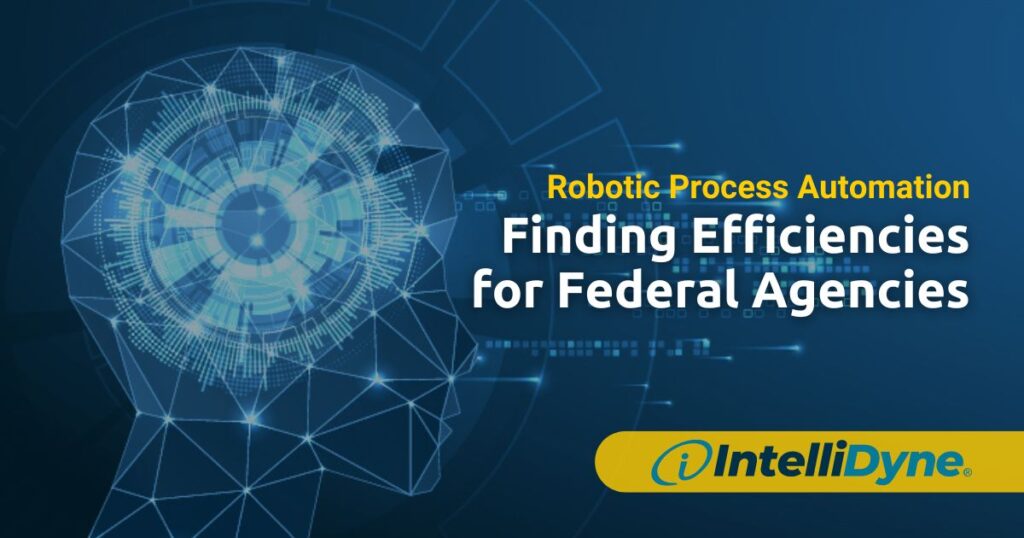Federal agencies are turning to Robotic Process Automation (RPA) to automate mundane, repetitive, manual tasks, freeing up workers to focus on higher-value projects that require critical thinking. RPA can be used to connect systems, process requests, and perform a multitude of common functions from data entry and data processing to data mapping with the click of a button.
IntelliDyne works with federal government agencies to realize the efficiencies and cost savings of implementing RPA and to limit the challenges involved in implementation and ongoing management. Replacing manual tasks with automation leads to:
- Improved accuracy and precision
- Ability to process greater amounts of data faster
- Manpower realignment to more complex tasks
RPA for IT Asset Management
IntelliDyne is supporting a health-centric federal agency to automate data entry for more than five thousand computer assets—servers, workstations, and laptops—into eMASS, the Enterprise Mission Assurance Support Service, which is used across the U.S. Department of Defense’s information system for cybersecurity management. The existing data entry process required a day’s worth of manual uploads every week and human assessment of disparate fields, resulting in data entry delays and discrepancies.
ETL with Eyes
IntelliDyne’s RPA solution uses a three-step ETL process to extract data from its current data containers, transform it to map it to appropriate fields in the final data repository (eMASS), and finally to load thousands of records into the new system, all in a matter of seconds instead of hours or days. To accommodate field mapping disparities, which would break the bot running the data mapping process, IntelliDyne integrated Computer Vision, a form of artificial intelligence, to view the data entry GUI as a human would, to mitigate future data entry issues resulting from vendor changes to the user interface.
IntelliDyne helps enable federal government agencies to leverage the latest technology to optimize operations. With proper planning and training, the challenges associated with automation can be alleviated, including its effect on existing roles, data privacy concerns in transferring sensitive data between systems, and skilled resourcing to implement and manage RPA. The potential rewards far outweigh the initial hurdles, resulting in improved accuracy and speed and reduced operating costs over the long term.

